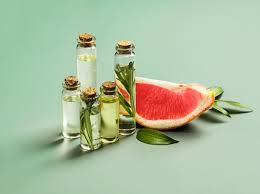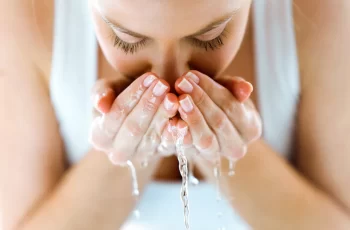
Hydrating and Moisturizing Ingredients List and Dictionary
When it comes to skincare, choosing the right moisturizing ingredients is crucial to maintaining healthy, hydrated skin. However, it’s important to note that there isn’t a single “best” moisturizing ingredient. The most effective moisturizers generally combine ingredients from multiple categories, and your unique skin type will determine which ingredients work best for you. If you’re unsure about your skin type, consider taking a Baumann Skin Type Quiz to identify the right moisturizing ingredients for your skin’s needs.
There are five main categories of moisturizing ingredients that help address different aspects of skin hydration and barrier repair. A comprehensive moisturizer should typically include ingredients from a variety of these categories to provide short-term hydration and long-term barrier protection.
Main Categories of Moisturizing Ingredients
The five main categories of moisturizing ingredients are:
Emollients
Humectants
Occlusives
Oils
Fatty Acids
These categories are essential for creating moisturizers that meet different skin needs, whether you are looking for quick hydration, long-lasting moisture, or barrier repair.
1. Emollients: Softening and Smoothing Agents
Emollients are ingredients that smooth and soften the skin by coating its surface. These ingredients create a temporary, smooth appearance by improving the texture of the skin and allowing light to reflect off it, making the skin look more radiant. Emollients are also known for their ability to mask fine lines and wrinkles.
Common Emollient Ingredients:
Dimethicone: A silicone-based emollient that creates a smooth, silky texture.
Cetearyl Alcohol: A fatty alcohol that smooths the skin and adds moisture.
Cyclopentasiloxane: A lightweight silicone that provides smoothness and softens skin without feeling greasy.
Emollients can sometimes also function as humectants (ingredients that attract moisture) or occlusives (ingredients that create a barrier). In some cases, an emollient will have dual functions to provide both temporary smoothness and longer-lasting hydration.
2. Humectants: Drawing Moisture into the Skin
Humectants are ingredients that pull moisture from the environment or deeper layers of the skin and draw it into the skin’s surface. These ingredients are crucial for giving your skin that fresh, dewy appearance. In humid climates, humectants work especially well by attracting moisture from the air. However, in dry climates, they may pull moisture from the skin, which can lead to dehydration if not paired with occlusives.
Common Humectant Ingredients:
Glycerin: One of the most popular and effective humectants, glycerin attracts moisture from the air and binds it to the skin.
Hyaluronic Acid: Known for its ability to retain moisture, hyaluronic acid holds up to 1000 times its weight in water.
Urea: A natural humectant that is both moisturizing and exfoliating.
Propylene Glycol: A synthetic humectant that helps to attract water into the skin.
When using humectants, it’s best to combine them with occlusives (which create a barrier to lock in moisture) to prevent moisture from evaporating, especially in dry conditions.
3. Occlusives: Locking in Moisture
Occlusives create a protective layer on the skin’s surface, preventing water loss and sealing moisture in. These ingredients are ideal for creating long-lasting hydration. Occlusives are particularly useful in dry, cold climates where moisture can easily escape from the skin. Occlusives are often thicker than other moisturizing ingredients and may leave a greasy or heavy feeling on the skin.
Common Occlusive Ingredients:
Petrolatum (Petroleum Jelly): A powerful occlusive ingredient that locks moisture in and protects the skin from the elements.
Beeswax: A natural occlusive agent that forms a protective barrier on the skin.
Dimethicone: Also functions as an emollient and occlusive, creating a barrier to prevent water loss.
Lanolin: A natural, waxy substance derived from sheep’s wool, providing both occlusive and emollient benefits.
Coconut Oil: While often used as an oil, it also serves as an occlusive ingredient, keeping moisture sealed in.
These ingredients are great for dry or damaged skin, as they help create a barrier to maintain moisture and prevent irritation.
4. Oils: Nourishing and Hydrating Fatty Acids
Oils are natural moisturizers that provide essential fatty acids to help keep the skin hydrated and nourished. Oils are a great source of both unsaturated and saturated fatty acids, which help maintain the skin’s barrier function and improve moisture retention. However, oils are occlusive in nature, so they may not be ideal for acne-prone skin as they could clog pores.
Common Oil Ingredients:
Argan Oil: Rich in essential fatty acids and antioxidants, argan oil is known for its moisturizing and anti-aging properties.
Jojoba Oil: Similar in composition to the skin’s natural sebum, jojoba oil hydrates and balances the skin.
Olive Oil: A deeply hydrating oil packed with fatty acids and antioxidants, ideal for dry or sensitive skin.
Rosehip Oil: Known for its ability to hydrate and improve skin texture, rosehip oil is rich in essential fatty acids and vitamins.
Coconut Oil: A popular oil with strong occlusive properties, helping to seal moisture in.
Although oils are highly beneficial for moisture retention, it’s important to be cautious with oils if you have sensitive or acne-prone skin, as some oils can be comedogenic (clog pores).
5. Fatty Acids: Maintaining Skin’s Barrier Function
Fatty Acids are essential components of the skin’s natural barrier, and they play an important role in maintaining hydration. Fatty acids help prevent moisture loss by forming part of the skin’s lipid barrier, which protects the skin from external aggressors. They also support the production of healthy, functioning skin cells.
Common Fatty Acid Ingredients:
Linoleic Acid: An essential fatty acid that helps to strengthen the skin’s natural barrier.
Oleic Acid: A monounsaturated fatty acid that is highly moisturizing and soothing for dry skin.
Stearic Acid: A saturated fatty acid that helps to protect and condition the skin.
Lauric Acid: Found in coconut oil, lauric acid helps to hydrate and balance the skin’s oil levels.
Fatty acids are typically found in oils and butters and play a significant role in repairing and reinforcing the skin’s barrier, especially in dry or damaged skin.
The Natural Moisturizing Factor (NMF)
The Natural Moisturizing Factor (NMF) is a critical element in maintaining the skin’s hydration. It consists of various natural substances, including amino acids, that are naturally found in the skin and contribute to moisture retention and barrier function.
NMF is primarily composed of amino acids such as histidine, glutamine, and arginine, which have hygroscopic properties—meaning they attract and bind water effectively. These amino acids contribute to the skin’s ability to stay hydrated and retain moisture.
NMF-Related Ingredients:
Pyrrolidone Carboxylic Acid (PCA)
Urea
Lactate
Histidine
Glutamine
Arginine
Although NMF itself is not typically included in skincare products, the amino acids that contribute to its function are commonly found in moisturizers.
Finding the Best Moisturizing Ingredients for Your Skin
Choosing the best moisturizer for your skin involves understanding which types of ingredients are suitable for your Baumann Skin Type. Everyone’s skin has different needs, and factors like climate, age, and skin concerns all play a role in determining which moisturizing ingredients will work best.
To make sure you’re getting the most out of your moisturizer, pay attention to the ingredient list, and look for a combination of humectants, emollients, and occlusives to ensure both immediate and long-lasting hydration.
Common Moisturizing Ingredients to Look For:
Glycerin
Hyaluronic Acid
Cocoa Butter
Shea Butter
Squalane
Macadamia Oil
Sunflower Oil
Coconut Oil
For a personalized recommendation, consider taking a skincare quiz to identify the best ingredients for your skin’s unique needs.
Conclusion
There’s no one-size-fits-all solution when it comes to moisturizing ingredients. Whether you prefer lightweight hydrating formulas or rich oils, understanding your skin type and how different ingredients function can help you make the right choice. By combining the best ingredients from each moisturizing category, you can keep your skin hydrated, healthy, and glowing year-round.
Take the quiz to find the best moisturizing ingredients for your skin, and always check the product labels to ensure you’re selecting the best moisturizer for your unique needs.


